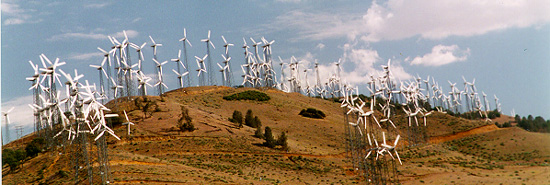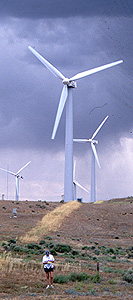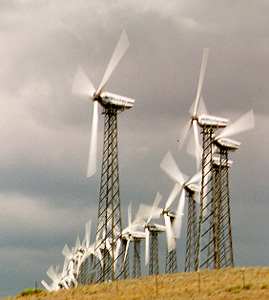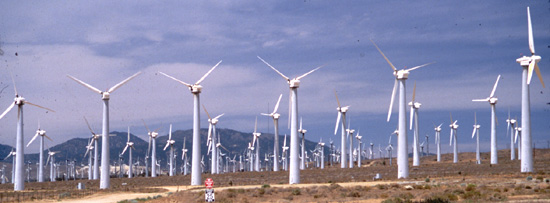|
Today these wind turbines collectively generate 1,3
billion kilowatt-hours of electricity per year - enough to meet the
residential needs of nearly 500,000 people.California's wind
turbines were made by firms in the U.S., Canada, Denmark, Germany, Great
Britain, Japan, and the Netherlands.
 |
There are
more than a dozen different kinds of wind turbines operating in
California today. Most use a propeller that spins about a horizontal
axis (Photo right).
The hoop-shaped Darrieus or "Eggbeater" turbines
count for 5% of the states wind machines. They are now phased
out in favor of horizontal axis turbines.
(drawing left:© Kern Wind Energy Association) |
Each wind turbine has its own
electronic "brain" and thinks for itself. They turn themselves
on when conditions are right, and they turn themselves off when the
winds are too strong, or when they sense a problem. Most turbines change
directions as the wind changes. The Eggbatter turbines accept the wind
from all directions.
The turbines are designed to
operate 20 years. During that time, the blades, transmissions, generators,
and other moving part will be rebuilt or replaced. Because of California's
dry climate the metal structure supporting the turbines should last
indefinitely. |

(photo4)
|

![]() Articles
Articles![]() Postcards
Postcards![]() R.V.Camps
R.V.Camps![]() Back to Home page
Back to Home page![]() Price structure - Prix de cession des droits
Price structure - Prix de cession des droits
 (photo2)
(photo2)



